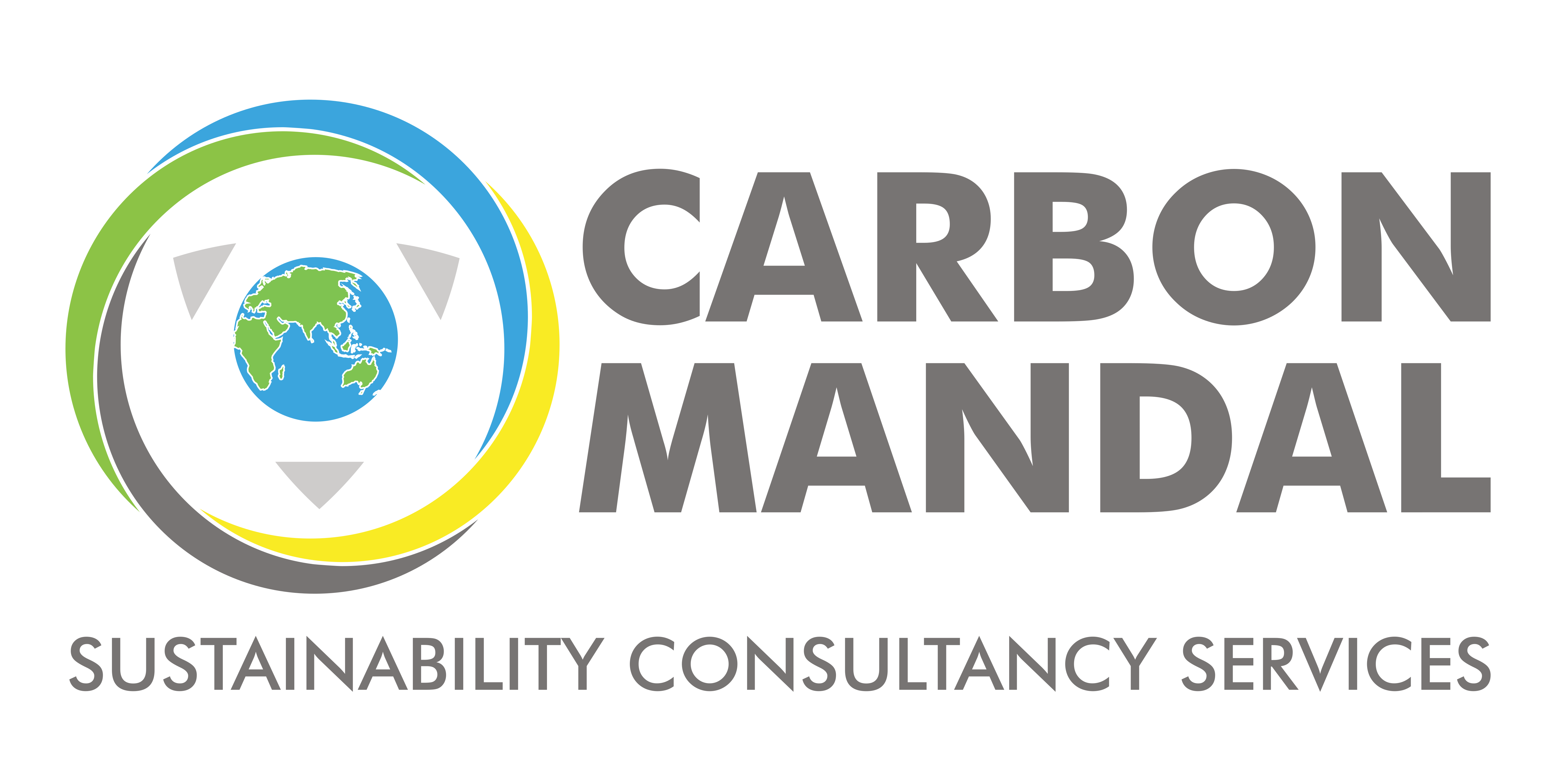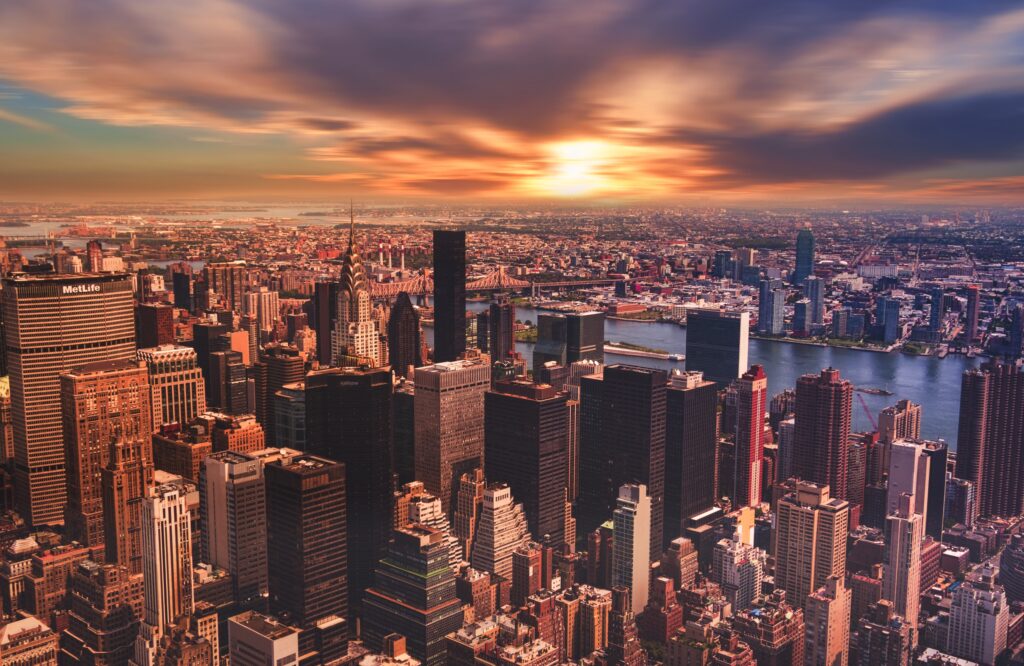Nearly 100 cities all around the world are working in collaboration with the C40 organisation to construct future-proof sustainable infrastructures to mitigate the impacts of climate change.
Did you know that globally, cities occupy nearly 3% of the earth’s land and yet house over 50% of the world’s population, produce 70% carbon emissions, and consume 60% of resources? Rapid urbanization has contributed to a rise in the population living in cities, especially in slums. Consequently, basic infrastructures and services for waste management and sanitation, clean water, roads, public transport, and more to cater to the increasing city population are proving to be inadequate [1].
Unplanned urban development coupled with the population rise has also increased health-related problems. Covid-19 pandemic is a good case in point as over 90% of all cases have emerged from urban areas [2]. This is largely due to the proximity of living conditions.
Traffic congestion, industrial operations, landfills, burning of agricultural waste, etc., continue to affect the air quality in cities, forcing citizens to breathe pollution. Almost 99% of the global population is exposed to levels of air pollution that place them at risk for diseases like heart disease, stroke, chronic obstructive pulmonary disease, cancer, and pneumonia [3]. On the other hand, extreme weather events such as cyclones, urban floods wreak havoc every year, causing both economic and social crises. With such recurring negative impacts, it has become substantial to build resilient urban infrastructures that guarantee sustainability.
Today, there are multiple organizations in place to tackle these pressing issues of our time. One such organization acting upon this crucial matter by facilitating and guiding city officials all around the world is C40.
What is C40?
“A global network of mayors taking urgent action to confront the climate crisis and create a future where everyone can thrive [4]“.
What started with 18 megacities in 2005, now has 97 members making an effort to implement robust action plans to mitigate as well as adapt to the changing climate. These 97 cities belonging to the global south and north are working in collaboration with the C40 organisation to construct future-proof sustainable infrastructures to mitigate the impacts of climate change.
With a scientific and collaborative approach, the C40 aims to:
● Limit global warming to 1.5° C,
● Improve equity,
● Build resilience, and finally
● Provide good living conditions for all.
C40’s guiding principles are rooted in the goals set at the landmark 2015 Paris Agreement. Cities earn their membership by proving their participation in taking action.
What Advantages do these C40 members receive?
Understanding the significance of local geography, the C40 services and support are driven by the regional approach. Here are multiple ways in which the C40 is helping its member cities [5]:
● Through their climate action plans, just recovery agenda, high-impact declaration, and measures to construct inclusive and thriving cities, C40 is engaging with cities to adopt ambitious initiatives. This includes building regional capacity and competency for taking inclusive, equitable climate actions such that no one is marginalised.
● With a set of high-impact declarations (clean air, clean construction, zero waste, equity pledge, divestment from fossil fuels, job creation and more.), C40 encourages mayors to take high impact actions.
● With the help of C40’s global diplomacy and advocacy, city officials are encouraged to participate in regional and national political discussions. This is rooted in the belief to enhance their leadership and build fair economies when it comes to delivering climate and sustainability solutions.
● To shape a green economy, C40 supports cities in the divestment from fossil fuels. It works to improve climate finance and scale-up investments in infrastructures such as clean energy, zero-carbon building, waste management, public transport, etc. With consultation, research, technical assistance, workshops, project preparation, and more, C40 makes sure to equip cities with all the resources they might need.
● C40’s business and innovation programme also assists city officials to engage with the private sector to develop joint climate goals catering to their respective region of operation.
● C40’s ‘Global Green New Deal’ pilot programme seeks to have cities recognise the climate emergency and commit to the 1.5°C goals of the Paris Agreement. It lays out principles for member cities to put climate action in their decision-making while also encouraging political leaders, civil society, trade unions, CEOs, and investors to recognise the climate emergency.
● Realising the involvement of youth in pushing for climate action, C40 also provides a forum for global youth and mayors. The forum is a platform for discussions to work collectively for implementing the Global Green New Deal with a scientific approach and win over oppositions.
● As a track of the ‘Race to Zero’ campaign by the UN, C40 has developed the ‘Cities Race to Zero’. Here, the campaign influences cities to sign up for climate actions in line with the agendas of the 2015 Paris agreement.
As mentioned earlier, C40 delivers the action plan that aligns with the demands and is best suited to the city. This makes it easier and efficient to understand existing problems and influence relevant decision-making.
A Case in Point: Here’s how Mumbai is collaborating with the C40 Organization to take Climate Action
Mumbai is the only fifth Indian city besides Bangalore, Chennai, Kolkata, and Delhi to join the C40 network in 2020. Working in partnership with the C40, WRI, the environment department of Maharashtra, among others, Mumbai aims to identify vulnerable communities and increase resilience by introducing sector-specific strategies to mitigate and adapt to the effects of climate change.
The Mumbai Climate Action Plan has identified 6 focus areas to implement robust climate action programmes [6]:
1. Sustainable Waste Management
“Decentralizing waste management using a reduce, reuse & recycle approach”
2. Urban Greening and Biodiversity
“Adopting a scientific approach to the green cover across the city of Mumbai”
3. Urban Flooding and Water Resource Management
“Strategising to address water inequity and increasing flood risks”
4. Energy and Buildings
“Inspiring just transitions to clean energy along with financing innovation”
5. Air Quality
“Building strategies to mitigate air pollution in high-risk neighbourhoods”
6. Sustainable Mobility
“Modernizing public transportation to enable a shift to public transport”Recently, the government of Maharashtra has been introducing comprehensive action plans for climate mitigation. One such initiative is to generate 250 MW of Solar energy (enough to power more than 2 lakh homes[7]) from the new Mumbai-Nagpur Highway[8].
The Government has also introduced the ‘Women4Climate’ Initiative with C40 to encourage the participation of women in taking climate action. Through the programme, 25 emerging women leaders will be supported to enhance their leadership skills and mobilize others to accelerate climate action [9].
Acknowledging Mumbai’s climate leadership, the Government of Maharashtra was awarded the Inspiring Regional Leadership Award by the Under2 Coalition at the 26th Conference of Parties (COP26) in Glasgow.
Considering the impact cities have on the planet, sustainable urban development is a key opportunity for mitigating the devastating impacts of climate change. One of the biggest threats is the rising of sea level due to the extent of global warming.
As per estimations, low-lying coastal cities such as Jakarta, Indonesia; Lagos, Nigeria; Houston, Texas; Dhaka, Bangladesh; Venice, Italy; Virginia Beach, Virginia; Bangkok, Thailand; New Orleans, Louisiana; Rotterdam, Netherlands; Alexandria, Egypt; etc., are the top 10 countries to disappear by the end of this century[10]. Major cities such as Mumbai, India; New York, The USA; Shanghai, China; etc are also on the brunt of going underwater by 2050![11].
Rapid, inclusive, and equitable urban environmental management for greenhouse gas mitigation, air pollution, urban flooding, clean energy and mobility, clean water and sanitation, among other matters is bound to reap benefits on all three fronts: Environment, Social, and Economic.
Smart and sustainable cities are the future. Cities must sign up and have organizations such as the C40 help them secure their future on the planet.
Willing to take action and grow your business? Connect with our Carbon Mandal sustainability professionals Click here
List of References
- United Nations Sustainable Development. 2021. Cities . Accessed December 1, 2021.
- Un.org. 2021 . Accessed December 1, 2021.
- Who.int. 2021. Air pollution . Accessed December 1, 2021.
- C40 Cities. 2021. C40 Cities – A global network of mayors taking urgent action to confront the climate crisis and create a future where everyone can thrive . Accessed December 1, 2021.
- C40 Cities. 2021. C40 Cities – A global network of mayors taking urgent action to confront the climate crisis and create a future where everyone can thrive . Accessed December 1, 2021.
- 2021 . Accessed December 1, 2021.
- News, C. and News, d., 2021. 1-MW solar power plant to light up 1,000 city homes | Delhi News – Times of India. . Accessed December 1, 2021.
- IndiaTimes. 2021. COP26: Maharashtra Wins Award For Climate Action, Becomes Only Indian State To Get Recognition . Accessed December 1, 2021.
- W4c.org. 2021. W4C – Women4Climate Mumbai . Accessed December 1, 2021.
- World Economic Forum. 2021. These 11 sinking cities could disappear by 2100 . Accessed December 1, 2021.
- loveexploring.com. 2021. Incredible places that will be underwater by 2050 | loveexploring.com . Accessed December 1, 2021.

